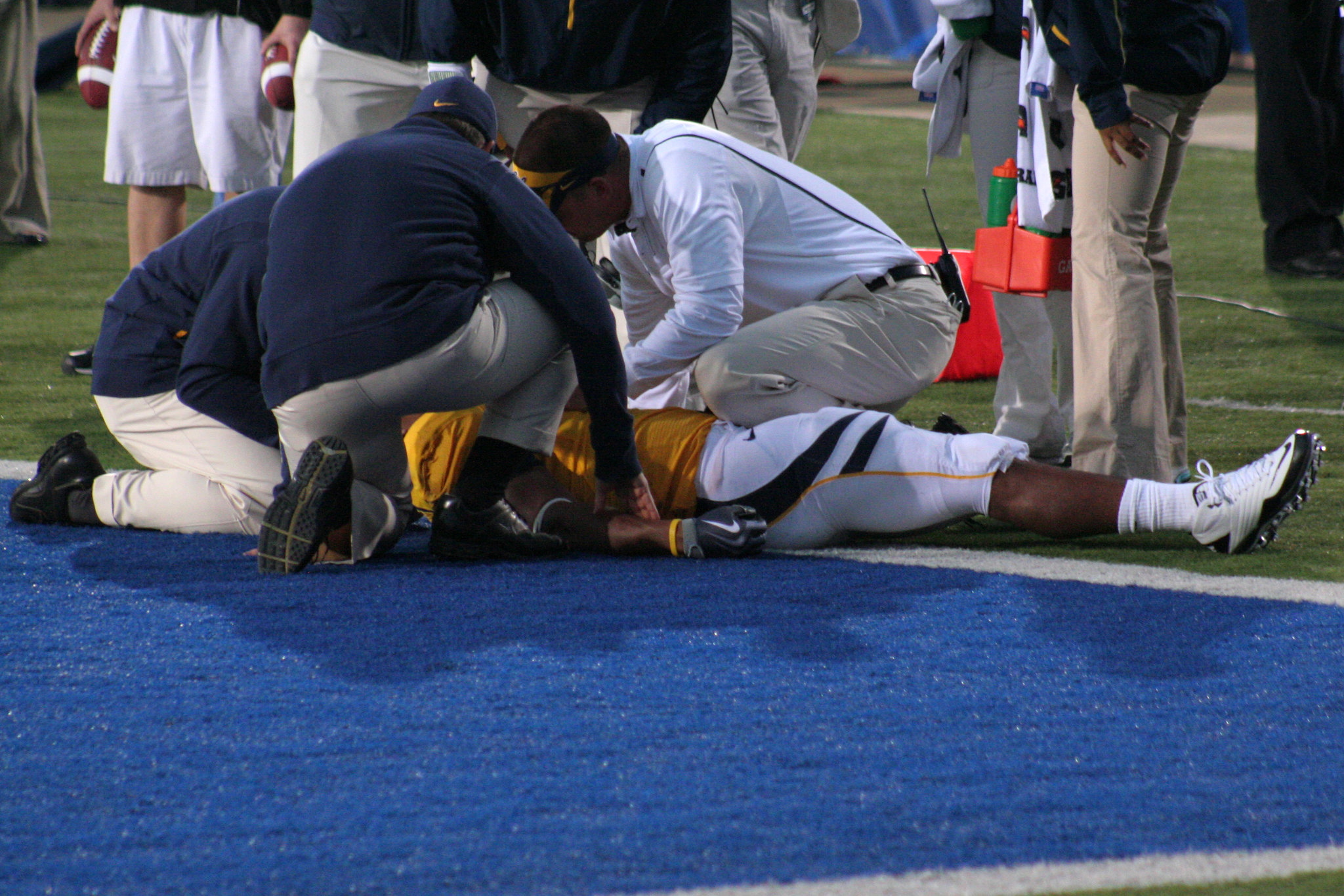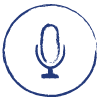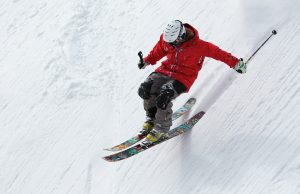18 Safe Sport: Rules are an Essential Piece of the Puzzle
Lori A. Livingston
Susan L. Forbes
Themes
Rules
Rules classification systems
Rule modification
Learning Objectives
When you have completed this chapter, you will be able to:
LO1 Identify the different types of sports rules;
LO2 Recognize which rules are intended to promote safe participation;
LO3 Identify who is responsible for ensuring safe sports;
LO4 Identify the role each participant has for following the rules to ensure safe sports; and
LO5 Identify how rules can be modified to ensure safe sports.
Overview
Rules play a critical role in imposing structure on sport competitions, thereby creating equitable and safe conditions under which proficiency in physical skills and strategic prowess can be effectively tested between competitors. This chapter introduces the reader to the purpose of rules, rule classification systems, and the importance of using objective data to guide additions to or modifications of existing rule sets. The creation of safe playing environments requires all sport participants including administrators, officials, coaches, players, other team management personnel, and spectators, to understand their obligation to know and abide by the rules of their sport.
Key Dates
Sports represent games or competitions of physical ability which have been formalized (or codified) with the addition of rules.[1] The primary purpose of rules is to impose structure, thereby creating conditions under which proficiency in physical skills, fitness, and strategic prowess may be effectively tested between competitors.[2] When implemented efficiently and fairly, rules allow all contestants equal opportunities to perform, excel, and challenge each other in tests of relative abilities.
Rules also aim to clearly delineate all of the necessary conditions for participants to remain unharmed and injury free while allowing for a degree of variability in athletes’ motor behaviours.[3] Keeping sports safe through rule creation, implementation, and ongoing modification is important as the incidence of sport-related injuries – especially in collision sports such as ice hockey, football, wrestling, and Taekwondo – is a major public health concern.[4] To truly understand the role that rules play in keeping sport safe, sport participants need to understand the purpose of rules as well as their personal obligations with respect to observing them.
Rule Classification Systems
In an earlier paper examining the topic of rule modification and rule enforcement as means to reducing injury in the sports of ice hockey, soccer, and basketball,[5] we used Shogan’s (1988) rules taxonomy as a framework to group rules into meaningful categories. This rules taxonomy, or classification system, coincides with more recently proposed systems (e.g., Cudd, 2007; Bergmann Drewe, 2000) in that it essentially differentiates between two types of basic rules; that is, those that refer to either the external or internal logic of the sport.[6] The basic structure of rule classification systems is illustrated in Figure 18.1.
Figure 18.1 Rules Classification System
Rules categorized as regulatory, or pertaining to the external logic of the sport, make it possible to administer competitions efficiently. For example, uniform numbers and team line ups allow those keeping score to accurately record who scored and who assisted on a goal in a game of lacrosse. However, these functions are nonessential as the score could simply be recorded as total number of goals scored by either team without the statistical detail. To that end, regulatory rules may be viewed as nonessential or having minimal impact on a competition.
In contrast, the rules categorized as constitutive, or pertaining to the internal logic of the sport, define the criteria that mark the relationships between a competitor and the rest of their opponents, as well as game time, spaces, and equipment. Constitutive rules may be subcategorized as being descriptive, prescriptive, or proscriptive in nature. Descriptive rules, as their name implies, describe or quantify the temporal aspects of the competition (e.g., total game time or maximum routine duration), as well as the dimensions of the playing area, the number of athletes occupying the space, and the size, shape, material aspects, and weight of the equipment used.[7] Conceived another way, it is the descriptive rules that define the structural aspects of the competition.
However, prescriptive and proscriptive rules are functional in nature.[8] They determine athletes’ acceptable actions or their obligations and rights within the playing environment. More specifically, prescriptive rules as their name implies, prescribe those actions which an individual may perform when engaged in a game. The breaking of such a rule is not a penalty but rather a loss of possession. For example, in the sport of basketball players are allowed a maximum number of steps when carrying the ball. If the player exceeds this limit, a skill violation (i.e., travelling) is called and the opposing team is awarded the ball.
Proscriptive rules differ in that they proscribe or prohibit harmful actions which a person must not engage in. The breaking of such a rule leads to the imposition of a penalty. In team sports characterized by body contact, proscriptive rules are used to limit both the nature and magnitude of such contact.

A good example of this comes from the sport of football where game legislators have implemented targeting rules (i.e., the act of taking aim and initiating contact with an opponent above the shoulders with the helmet, forearm, hand, fist, elbow, or shoulders) to control impacts between tacklers and otherwise defenseless players.[9]
When thinking about the constitutive (or internal logic) rules of sport, it is easy for most people to understand that descriptive rules have always been part of sport. Less well known is that up until the early 20th century, rule sets were largely prescriptive in nature. They were focused on regulating the mechanisms of play with the goal of providing opportunities for individuals to participate to the best of their abilities while competing within an environment based on trust and fairness.[10]
For example, in the early 1900s in the sport of women’s field lacrosse, the 12 players per team would equally space themselves throughout the field as they ran, passed, and caught the ball and moved towards the opponent’s goal. The only limitation on player movement pertained to the goal crease area. This sport, which evolved in Great Britain, was the epitome of the ethos of fair play. However, in the late 1980s and early 1990s, it was not unusual at the World Cup level to see all 12 team players (or 24 players from two teams) occupying only the offensive or defensive half of the field. This led to considerable congestion in front of the goal cages and increases in the incidence of injuries caused by collisions between players or as a result of a ball or stick striking the body.
The rule makers had no option but to introduce prescriptive rules to limit the movements of players about the field and proscriptive rules to penalize those who insisted on standing in front of the goal while not actively marking an opponent. With the growth of commercialism and the rise of professional and semi-professional sports, winning has become the primary outcome of interest at all levels of sport. With this transformation came not only the need for more prescriptive rules about how to play, but also more proscriptive rules to manage participant behaviours[11] including those associated with competition induced injuries.
Using Objective Data to Link Rules and Rule Modifications to Injury Prevention

Participation in sport is recommended because of the health benefits associated with maintaining a physically active lifestyle even though such participation may also be associated with injury.[12] Rules in and of themselves cannot prevent all injuries from happening, but they may reduce the incidence or nature of the injuries being observed. As sports evolve, so too do their rule sets – by modifying existing rules or adding new ones – in an effort to keep competitions safe and as injury free as possible. In amateur sport, the task of reviewing existing rules lies with committees or panels of knowledge content experts convened by national or international sport governing bodies.
Professional sports organizations tend to conduct their own reviews with an eye to modifying rules to reduce injury as well as to satisfy their specific commercial interests. This is why the rules differ between professional and amateur competitions, and at the amateur level, between nationally- and internationally-sanctioned levels of play. The frequency with which these reviews take place varies (i.e., often occurring on annual, biennial, or quadrennial time frames), yet all decisions to modify rules need to be supported by objective data both prior to and following their implementation.
Video Evidence
Case studies, and in particular those captured on video, can provide valuable information upon which to question existing competition rules and the environments in which sports occur. For example, on December 27, 1980, professional ice hockey player Mark Howe of the Philadelphia Flyers was impaled by the pointed metal centre base support post of the hockey net, suffering a catastrophic and almost career ending injury at the base of his spine. This led to a change in ice hockey goal net design now universally seen throughout the sport. In 2012, the tragic death of Canadian ski cross racer Nik Zorocic as a result of hitting the finish line post at an event in Grindelwald, Switzerland led to more stringent rules calling for greater distances between the finish line post, safety netting, and the elimination of hard objects such as large mounds of packed snow near the finish. In both of these instances, video evidence supported changes to the descriptive rules pertaining to the competition environments and the permanent fixtures found within them for the purposes of enhancing athlete safety. However, the gold standard for linking rules and rule modifications to enhanced sport safety necessarily relies on the science of epidemiology.
Epidemiological Evidence
In 1982, the United States-based National Collegiate Athletic Association (NCAA) established the NCAA Injury Surveillance System with the aim of collecting exposure and injury data from a sample of NCAA colleges and universities.[13] For each injury event, an athletic trainer completes a detailed report on the athlete’s demographic information (e.g., age, sex, height, mass), the injury or condition (i.e., body site, diagnosis) and the circumstances (e.g., activity (i.e., sport, position), mechanism of injury (e.g., body contact, illegal behaviour, or rule violation), and event (i.e., competition or practice). A similar national reporting system for high schools in the United States (i.e., High School-Reporting Information Online or HS-RIO) was established later in 2005-2006.
Databases like these, and standalone studies which collect the same type of data, provide sports injury epidemiologists with information to perform the essential first step in describing at-risk sport populations in combination with their injury incidence and burden.[14] Importantly, epidemiological data and analyses have proven successful in driving rule modifications and hence reduced injury rates in youth contact sports. In rugby, for example, rules of the game regarding line-outs and scrums vary for different age groups.[15] Rule changes in youth football leagues, ones aimed at increasing touchbacks and reducing kick returns, have been associated with reduction in concussion injury rates.[16]
Introducing new rules or modifying existing ones is an ongoing and evolving process in every sport. As well intended as such changes may be, they can at times lead to unanticipated or unexpected outcomes.[17] The truth of the matter is that the effects of rule changes are rarely researched.[18] In addition, even the most rigorously conducted epidemiological studies may not account for additional or constantly evolving factors (e.g., geographical inconsistencies in concussion-related legislation) associated with injury incidence.[19] However, interest in adopting more scientific approaches to understanding the anticipated and unanticipated effects of rule changes in sport has been on the rise over the past decade.

A sport injury epidemiologist studies the distribution (i.e., occurrence and frequency of occurrence) and determinants of sports injuries for the purpose of identifying and implementing measures to prevent their development.[20]
Wright (2014) convincingly argues that the use of operational research methodologies, or data analytics, can illustrate what happens now under existing rule sets, what has happened as a result of changes made, and how to objectively proceed with making future changes. The pros and cons of differing statistical methodologies are discussed and illustrated by numerous examples of rule changes from a variety of sports (e.g., badminton, basketball, cricket, cycling, ice hockey, motor sports, rugby, soccer, etc.) at mostly the professional or semi-professional level. The author, moreover, importantly links proposals for rule alteration or modification to the differing motivations or objectives of those individuals or organizations pushing for change. These objectives range from that of enhancing participant safety and fairness within competitions to more commercially-related interests including rewards for winning and creating excitement for spectators.
The importance of relying on objective approaches to support creating new rules or modifying existing rules to keep sport safe cannot be overstated. They represent an important and fundamental strategy in the creation of safe sporting environments. However, even when supported by science, rule changes are proposed and driven by human beings who may allow subjective elements (e.g., commercial gain) to influence their thinking. More difficult to predict is how athletes and other sport participants may behaviourally respond to the new rules.
For example, at the 2012 Olympics, controversy arose over whether or not British track cyclist Philip Hindes deliberately crashed after a slow start to take advantage of a rule which allowed for a restart if a crash occurred in the first lap.[21] While Hindes in this instance was not injured, the potential for injury to himself and other competitors was real. Hence, effective injury prevention strategies have to rely on more than the rules themselves. In sport, administrators, officials, coaches, athletes, and other support personnel must understand and appreciate how their behaviours and motivations to comply with or ignore the rules contribute to the creation of safe playing environments.
Rules are Just One Part of the Equation
As outlined in the Universal Code of Conduct to Prevent and Address Maltreatment in Sport (UCCMS), keeping sport safe is a collective obligation. The rules provide structure and in so doing, aim to create fair and safe playing environments. Such an outcome can be reasonably expected when each individual recognizes their role, the responsibilities associated with their role, and their willingness to abide by the rules. This includes sport administrators, officials, coaches, other team personnel, the athletes, and the spectators. Rules are everyone’s responsibility.
Sport administrators play a critical role in creating an environment which supports the strengthening of rule-specific knowledge and skill sets and, thereby, participant safety. For example, they are responsible for ensuring that their organizations comply with local laws and mandated legislation (e.g., Rowan’s Law; prescreening requirements for vulnerable pediatric populations) and that those in positions of responsibility are supported in developing their rule-related knowledge bases. This includes the provision of educational workshops and seminars for officials and coaches, as well as opportunities for input into critical decision-making processes (e.g., rule-related discussions and deliberations). Many organizations, in addition, aim to educate others about the rules, including parents who make up a large part of the spectator pool at grassroots amateur sporting events. Unfortunately, the efficacy of these educational programs and efforts remains largely unknown because of a lack of routine program evaluations. In the absence of such evaluations, rules continue to be perceived as largely the domain of officials only.
Sport officials (e.g., referees, umpires, judges, commissaires, etc.) are tasked with the challenge of equitably enforcing the rules to keep sport safe. They must understand the importance of their role while at the same time being diligent in constantly honing their abilities to be an effective official in their sport of choice. They must be competent and ethical in applying the rules. Importantly the extent of their intervention is not and should not be dictated by their wants or desires, but rather by the behaviours of those involved in the athletic contest. If a prescriptive (e.g., travelling in basketball) or proscriptive (e.g., checking from behind in ice hockey) rule is broken, a call is made. If there is no breaking of the rules, the contest should continue. The important concept here is that the problematic behaviour has to occur first (i.e., a priori) before the official acts to enforce the rule (i.e., post hoc).
In a previous investigation, we demonstrated that several invasion games (i.e., basketball, ice hockey, and soccer) already had numerous rules in place to keep sport safe, while at the same time arguing the need for continuous improvement in lowering injury rates through rule modification.[23] A key part of defining how effective any rule or rule modification may be, however, rests in part with participants understanding the rules and their responsibilities in the playing environment. In sport in general, there have been too many examples of athletes and their coaches not understanding, or simply ignoring, rules to keep athletes safe during the course of play.
While the lack of understanding can be somewhat managed through educational programming, opting to ignore the rules for unknown reasons is more problematic. It is difficult to accept the most flagrant and unexplainable of such actions, including two now somewhat historical but infamous incidents in the National Hockey League. These include a 1969 stick swinging fight between helmetless players Wayne Maki of the St. Louis Blues and Ted Green of the Boston Bruins that led to Green undergoing a lengthy operation to correct a depressed skull fracture.[24] A much later attack in 2000 when Marty McSorley of the Edmonton Oilers struck Vancouver Canuck Donald Brashear’s head with his stick, left the latter with a Grade 3 concussion.[25] Both of these incidents, as well as many others, are well documented.
It is difficult to explain, or even understand, why some individuals opt to break the rules and especially so when the resulting injuries are catastrophic. In a compelling critical review of the influence of money on sport, Woelfel (2018) provides a well-articulated argument linking changing societal attitudes to the pursuit of lucrative professional contracts and endorsement opportunities, a pursuit that now begins in youth sport. The phenomenon, long ago described as the “professionalization of youth sport”,[26] highlights the dominance of the win ethic, the privileging of the best athletes, and parents going into debt to support their children in the pursuit of professional sport success. Unfortunately, sport by its very nature places athletes within codified environments which are destined to declare a single winner from a pool of many competitors. The simple but now largely disregarded or lost perspective is that not everyone can win.
Figure 18.2 Safe Sport Environment

Concluding Thoughts
There is no simple answer or obvious solution when it comes to asking all sport participants to respect the rules of the sport in which they participate but sport researchers, now and into the future, need to problematize this issue and seek a solution. What needs to be broadly understood is that rules exist and they exist for two primary reasons; that is, to create fair and equitable competition environments while also aiming to keep all participants safe. We argue that the best way forward is for sport researchers to understand that the addition of new rules and rule modifications need to be supported by solid objective evidence while at same time acknowledging the subjective reasons as to why sport participants opt to obey or disobey the rules. Only when these two perspectives are brought together will we gain a true appreciation for the role that rules play in keeping sport safe and fun for all.
 Record Your Response
Record Your Response
Future Research
One area not sufficiently explored to date is the relationship between injuries and officiating decisions during competition. Work by Anderson et. al, (2018) provides an earlier example and includes the use of technology for investigative purposes but more needs to be done. See “Video analysis of acute injuries and referee decisions during the 24th Men’s Handball World Championship 2015 in Qatar.“
Key Terms
Suggested Assignments
1. How safe is your sport?
Review the rules of your sport and categorize them using the taxonomy presented in this chapter. Which rules relate directly to injury prevention?
2. Which sport is safest?
Choose three similar sports such as invasion sports (e.g. hockey, soccer, rugby) or combat sports (e.g. boxing, judo, karate). Identify and compare their safety-oriented rules, then compare their injury rates. Which sport is the safest and how do their rules match up to their level of safety?
3. Are rule changes making sports safer?
Design a research study where you study a sport that made rules changes, modifications, and/or additions to improve safety. How would you determine if those changes were effective?
Figure Descriptions
Figure 18.1 This figure illustrates the key components of Shogan’s (1988) rules classification system or taxonomy. [return to text]
Figure 18.2 This figure is a simple venn diagram illustrating the safe sport environment. On the outside are sport rules and athlete actions, which overlap and hold the text “safe sport environment.” [return to text]
Sources
Anderson, D. S., Cathcart, J., Wilson, I., Hides, J., Leung, F., & Kerr, D. (2020). Lower limb MSK injuries among school-aged rugby and football players: A systematic review. BMJ Open Sport & Exercise Medicine, 6(1), e000806–e000806. https://doi.org/10.1136/bmjsem-2020-000806
Arias, J. L., Argudo, F. M., & Alonso, J. I. (2011). Review of rule modification in sport. Journal of Sports Science & Medicine, 10(1), 1–8.
Drewe, S. B. (2000). The logical connection between moral education and physical education. Journal of Curriculum Studies, 32(4), 561–573. https://doi.org/10.1080/00220270050033628
Bouzane, B. (2012, March 10). Canadian ski cross racer Nik Zoricic dies following crash in Switzerland. The National Post. Retrieved November 12, 2021, from https://nationalpost.com/sports/canadian-skicross-racer-nick-zoricic-dies-following-crash-in-switzerland
Brower, J. (1979). The professionalization of organized youth sport: Social psychological impacts and outcomes. The Annals of the American Academy of Political and Social Science, 445(1), 39–46. https://doi.org/10.1177/000271627944500106
Canadian Broadcasting Corporation (CBC). (2000, March 8). Bruins’ Marty McSorley charged with assault. Retrieved November 12, 2021, from https://www.cbc.ca/sports/bruins-marty-mcsorley-charged-with-assault-1.200872
Cashmore, E. (2005). Making sense of sports (4th ed.). London: Routledge.
Chen, I. (2020, February 1). Exactly how dangerous is football?. The New Yorker. Retrieved November 12, 2021, from https://www.newyorker.com/culture/annals-of-inquiry/exactly-how-dangerous-is-football
Cudd, A. E. (2007). Sporting metaphors: Competition and the ethos of capitalism. Journal of the Philosophy of Sport, 34(1), 52–67. https://doi.org/10.1080/00948705.2007.9714709
Custance, C. (2011, November 10). Mark Howe’s journey all his own. ESPN. Retrieved November 12, 2021, from https://www.espn.com/nhl/halloffame11/story/_/id/7216908/2011-hockey-hall-fame-look-inductee-mark-howe
Deachman, B. (2020, September 21). That was then: Ottawa hosts exhibition of NHL violence. Ottawa Citizen. Retrieved November 12, 2021, from https://ottawacitizen.com/news/local-news/that-was-then-ottawa-hosts-exhibition-of-nhl-violence
Government of Ontario. (2021). Rowan’s law: Concussion safety. Retrieved November 12, 2021, from https://www.ontario.ca/page/rowans-law-concussion-safety
Guillaume, S., Lincoln, A. E., Hepburn, L., Caswell, S. V., & Kerr, Z. Y. (2021). Rule modifications to reduce checking-related injuries in high school boys’ lacrosse. Journal of Athletic Training, 56(4), 437–445. https://doi.org/10.4085/1062-6050-0489.19
Hammer, E., Brooks, M. A., Hetzel, S., Arakkal, A., & Comstock, R. D. (2020). Epidemiology of injuries sustained in boys’ high school contact and collision sports, 2008-2009 through 2012-2013. Orthopaedic Journal of Sports Medicine, 8(2), 2325967120903699–2325967120903699. https://doi.org/10.1177/2325967120903699
Hills, D. (2012, August 3). Olympic cycling: Philip Hindes crash admission ‘lost in translation’. The Guardian. Retrieved November 12, 2021, from https://www.theguardian.com/sport/2012/aug/03/london-2012-philip-hindes-crash-translation
Janowski, M., Zielinski, J., Ciekot-Soltysiak, M., Schneider, A., & Kusy, K. (2020). The effect of sports rules amendments on exercise intensity during Taekwondo-specific workouts. International Journal of Environmental Research and Public Health, 17(18), 6779–. https://doi.org/10.3390/ijerph17186779
Kerr, Z. Y., Comstock, R. D., Dompier, T. P., & Marshall, S. W. (2018). The first decade of web-based sports injury surveillance (2004-2005 through 2013-2014): Methods of the National Collegiate Athletic Association injury surveillance program and high school reporting information online. Journal of Athletic Training, 53(8), 729–737. https://doi.org/10.4085/1062-6050-143-17
Livingston, L. A., & Forbes, S. L. (2003). Rule modification and strict rule enforcement as a means of reducing injury in invasion games. Avante, 8, 12-20.
Livingston, L. A., Forbes, S. L., Wattie, N., & Cunningham, I. (2020). Sport officiating: Recruitment, development, and retention. London: Routledge.
Madera, J., Tella, V., & Saavedra, J. M. (2017). Effects of rule changes on game-related statistics in men’s water polo matches. Sports (Basel), 5(4), 84–. https://doi.org/10.3390/sports5040084
Obana, K. K., Mueller, J. D., Zhong, J. R., Saltzman, B. M., Lynch, T. S., Parisien, R. L., Ahmad, C. S., & Trofa, D. P. (2021). Targeting rule implementation decreases neck injuries in high school football: A national injury surveillance study. The Physician and Sportsmedicine, 1–5. https://doi.org/10.1080/00913847.2021.1932630
Ontario Rural Softball Association. (2021, July 1). Statement of Safe Sport. https://www.ontarioruralsoftballassociation.ca/wp-content/uploads/2021/08/ORSA-Safe-Sport-Policy-Manual-1-july-2021.pdf
Pal. S. (2020). Preventive methods for case series karate injuries- a review. Journal of Clinical and Diagnostic Research, 14(10), YE09–YE12. https://doi.org/10.7860/JCDR/2020/45510.14154
Puzic, S. (2012, April 23). Skier Nik Zoricic’s death not ‘freak accident’: Family. CTV News. Retrieved November 12, 2021, from https://www.ctvnews.ca/skier-nik-zoricic-s-death-not-freak-accident-family-1.800060
Shogan, D. (1988). Rules, penalties, and officials: Sport and the legality-morality distinction. CAHPERD Journal, 54(6), 6-11.
The Canadian Press. (2014, March 10). Nik Zoricic family feels vindicated by FIS findings. CBC Sports. Retrieved November 12, 2021, from https://www.cbc.ca/sports/olympics/winter/skiing/nik-zoricic-family-feels-vindicated-by-fis-findings-1.2567048
The Hockey History Blog. (2013, January 14). Wayne Maki and the terrible stick swinging incident. Retrieved November 12, 2021, from http://www.greatesthockeylegends.com/2013/01/wayne-maki-and-terrible-stick-swinging.html
Torres, C. R. (2010). The danger of selectively changing the rules in youth sport: The case of the strike zone. Journal of Physical Education, Recreation & Dance, 81(5), 29–34. https://doi.org/10.1080/07303084.2010.10598477
van Mechelen, W., Hlobil, H., & Kemper, H. C. (1992). Incidence, severity, aetiology and prevention of sports injuries: A review of concepts. Sports medicine, 14(2), 82–99. https://doi.org/10.2165/00007256-199214020-00002
Vriend, I., Gouttebarge, V., Finch, C. F., van Mechelen, W., & Verhagen, E. A. L. M. (2017). Intervention strategies used in sport injury prevention studies: A systematic review identifying studies applying the Haddon Matrix. Sports Medicine, 47(10), 2027–2043. https://doi.org/10.1007/s40279-017-0718-y
Wiebe, D. J., D’Alonzo, B. A., Harris, R., Putukian, M., & Campbell-McGovern, C. (2018). Association between the experimental kickoff rule and concussion rates in Ivy League football. Journal of the American Medical Association, 320(19), 2035–2036. https://doi.org/10.1001/jama.2018.14165
Woefel, R. (2018, May). Money ball. Referee Magazine, 43(5), 58-63.
Wright, M. (2014). OR analysis of sporting rules – a survey. European Journal of Operational Research, 232(1), 1-8.
- Livingston et al., 2020. ↵
- Torres, 2010. ↵
- Arias et al., 2011. ↵
- Anderson et al., 2020; Guillaume et al., 2021; Pal, 2020; Hammer et al., 2020. ↵
- Livingston & Forbes, 2003. ↵
- Arias et al., 2011. ↵
- Arias et al., 2011; Shogan, 1988. ↵
- Arias et al., 2011. ↵
- Obana et al., 2021. ↵
- Livingston et al., 2020. ↵
- Cashmore, 2005. ↵
- Vriend et al., 2017. ↵
- Kerr et al., 2018. ↵
- van Mechelen et al., 1992. ↵
- Anderson et al., 2020. ↵
- Wiebe et al., 2018. ↵
- Jankowski et al., 2020; Madera et al., 2017. ↵
- Madera et al., 2017; Vriend et al., 2017. ↵
- Guillaume et al., 2021. ↵
- A sport injury epidemiologist studies the distribution (i.e., occurrence and frequency of occurrence) and determinants of sports injuries for the purpose of identifying and implementing measures to prevent their development (adapted from https://www.physio-pedia.com/Sport_Injury_Epidemiology) ↵
- Hills, 2012. ↵
- Ontario Rural Softball Association, 2021. ↵
- Livingston & Forbes, 2003. ↵
- Deachman, 2020. ↵
- CBC, 2020. ↵
- Brower, 1979. ↵
Framework for grouping rules into meaningful categories.
Rules relating to the external logic of the sport and enable the administration of competition.
Rules that refer to the internal logic of the sport and define the criteria that mark the relationship between competitors, equipment, as well as playing parameters (e.g. space, time).
A subcategory of constitutive rules that determine participants' acceptable actions, obligations, and rights withing the playing environment.
This subcategory of constitutive rules define that is not allowed within the sport.
Subcategory of constitutive rules that define the structural aspects of competition.




 Self-Reflection
Self-Reflection

